Affiliate disclosure: This post may contain affiliate links. Please see our Privacy Policy.
Preserving cucumbers can be a challenge, and you only need so many pickles in a year. I’ve put together a dozen ways to preserve cucumbers without pickling, plus just a few incredible homemade pickling recipes you just have to try.
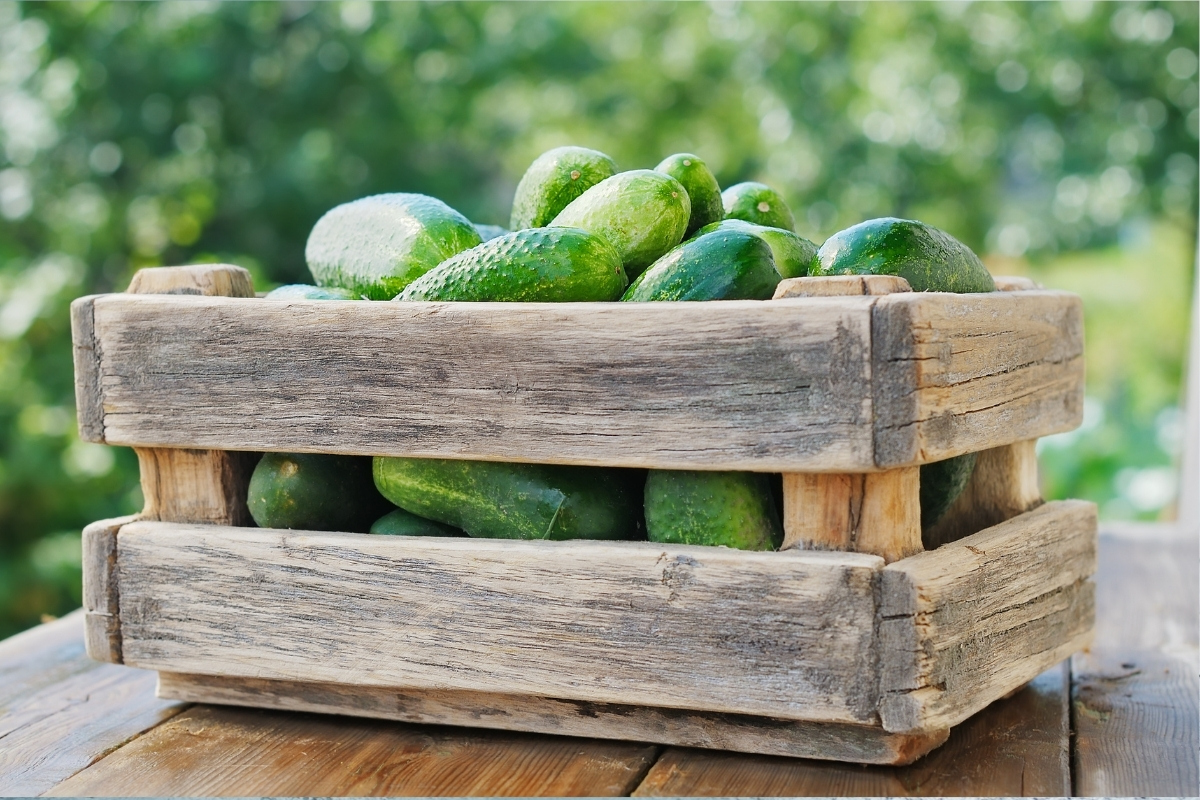
Table of Contents
- How to Store Fresh Cucumbers
- Freezing Cucumbers
- Dehydrating Cucumbers aka Cucumber Chips
- Cucumber Powder
- Cucumber Mint Jam
- Canning Cucumber Jelly
- Cucumber Salsa
- Fermenting Cucumbers
- Peppered Cucumber Infused Vinegar
- Cucumber Sorbet
- Cucumber Wine
- Cucumber Mint Kombucha
- Cucumber Infused Vodka
- Cucumber Pickling Recipes
- Sweet Refrigerator Pickles
- Canning Dill Pickles
- Canning Relish
- Canning Bread and Butter Pickles
- Spicy Garlic Dill Pickles
- Food Preservation Guides
Everyone talks about how prolific tomato and zucchini plants are, but it’s easy to forget that cucumber plants quickly overrun our gardens. Every summer, I end up with more cucumbers than I possibly could use, so I scramble to find ways to preserve cucumbers. I hate wasting a harvest, but you can only eat so many pickles!
I’ve found over a dozen creative ways to preserve cucumbers, and I’ll also share a few of my favorite pickle recipes too!
Cucumbers are harder to preserve because they have a high water content. That makes coming up with ways to preserve them a bit harder than apples or other fruits and vegetables.
But harder to preserve doesn’t mean impossible!
Let’s look at all of the different cucumbers preserving methods. Stop letting your homegrown cucumbers waste away without using them up to feed your family.
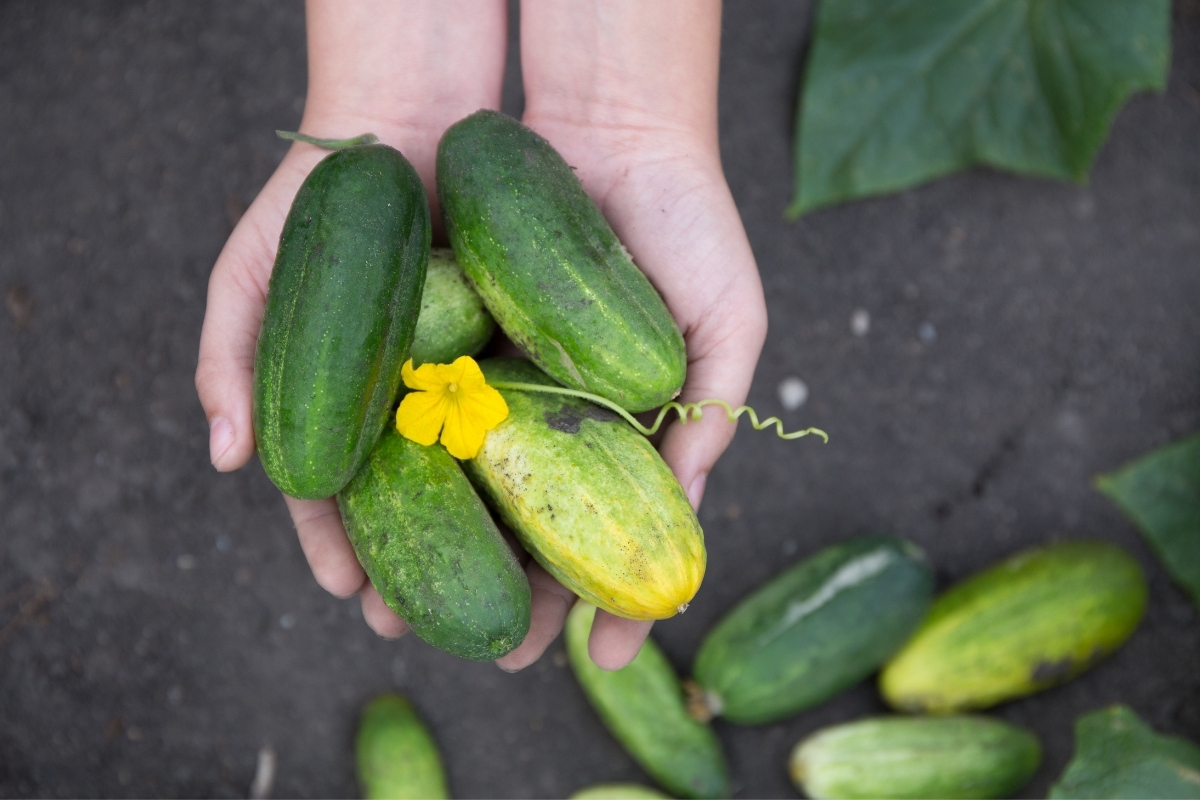
How to Store Fresh Cucumbers
Cucumbers store for about two weeks at top quality without softening or getting old. However, if you want to preserve cucumbers, it’s best to do so quickly because of their high water content. Storing cucumbers in the refrigerator helps them keep longer than two weeks, but you must do so quickly.
Temperatures below 45 to 50℉ damage cucumbers. The best way to store fresh cucumbers is to wash and thoroughly dry them. Then, wrap each cucumber in aluminum foil to stop moisture accumulation and keep them in an open, plastic bag.
Store cucumbers in the middle of the fridge rather than the bottom because it tends to be colder at the bottom. That’s why the crisp drawers are at the bottom. They should also be kept towards the front rather than the back because the fridge’s front is warmer.
If you do all of these, they’ll last up to three weeks (possibly 4) in the refrigerator, but they should be used or preserved as soon as possible.
After cutting your cucumbers, any leftovers should be kept as whole as possible. The clock starts to tick when you cut into a cucumber. If there are any large sections that you don’t use, cover the end in plastic wrap and store them in the fridge, but make sure you use them as soon as possible.
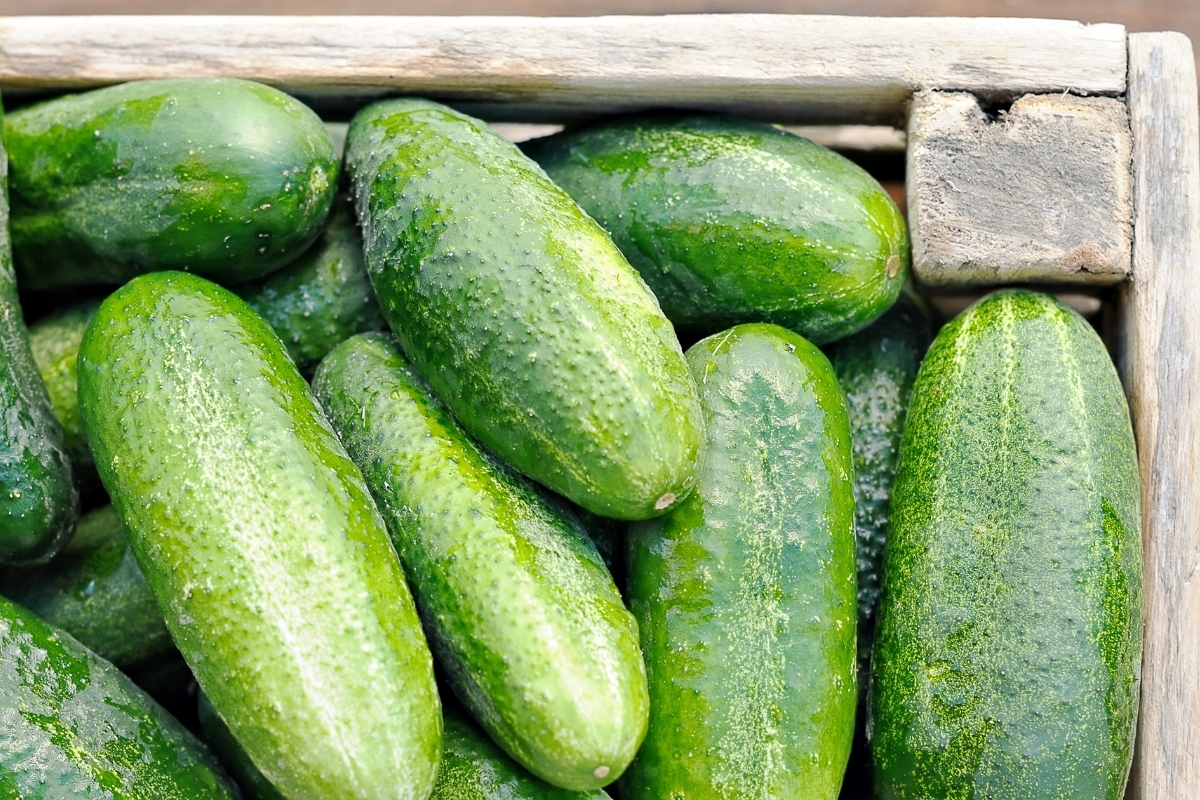
Freezing Cucumbers
Believe it or not, freezing cucumbers is possible. Most people assume that it’s not, but as long as you understand the texture will be different from fresh cucumbers.
There are two ways to freeze cucumbers, depending on how you plan to use them in the future. Either way, you need to wash and dry them thoroughly. If you want peeled cucumbers, peel them before freezing because the texture makes peeling harder after thawing.
The first method is to slice the cucumbers and put them on a baking sheet lined with parchment paper. Put them in the freezer for several hours, flash freezing them. Then, move them into a plastic Ziploc bag, labeling the bag before storing them in the freezer.
The second way to freeze cucumbers is by using ice cube trays, and making cucumber ice cubes. Slice the cucumbers and put them into cubes in the tray. Cover the cucumbers with water and put them in the freezer. (Alternately, just puree the cucumber in a food processor, and then strain before pouring into ice cube trays),
Either way, you’ll make cucumber ice cubes that are great for summertime drinks, or can be added to a quick smoothie.
Once frozen, store the cucumber ice cubes in plastic bags.
It’s also possible to freeze whole cucumbers straight out of the garden. Wash the cucumbers; peel them if you want. Remember, when you thaw them, peeling will be hard because of the texture. Put them in a plastic bag or another airtight container, and stick them into the freezer.
I don’t find freezing cucumbers whole the most practical choice. When I freeze cucumbers, I later use them in soups, relishes, or smoothies. It makes more sense to freeze them already peeled and in slices for those uses, or to simply make cucumber ice cubes for summertime drinks.
A couple of cucumber ice cubes makes for a great gin and tonic, but they’re also great in plain water too.
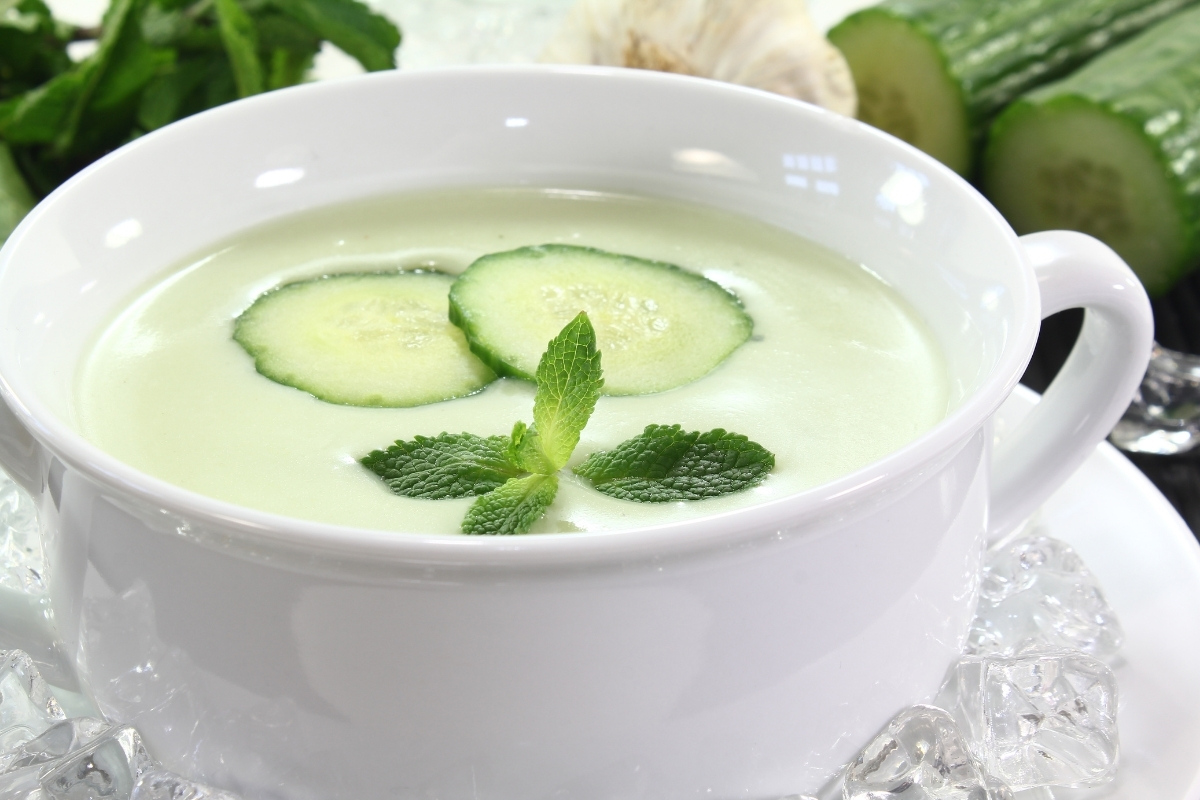
Dehydrating Cucumbers aka Cucumber Chips
I remember the first time that I tried cucumber chips. Honestly, I figured they wouldn’t taste too great, but to my surprise, I loved them, and I learned that there are many flavors that you can make cucumber chips.
I prefer the BBQ-flavored cucumber chips and ranch-flavored, but my kids gobble up salt and vinegar cucumber chips like they’re the real deal. I would rather feed my kids cucumber chips any day than potato chips from the store.
All you need to make dehydrated cucumber slices is a dehydrator, but you can use your oven if you don’t have one. Be sure to watch your oven closely because they tend to burn.
First, slice the cucumbers as thinly as possible and evenly to help them dehydrate at the same time. Using a mandolin slicer is the easiest way to get uniform slices, but you might be able to do so with a regular knife.
Toss the slices in two tsp of oil or vinegar, depending on what flavor you want. Sprinkle on whatever spices or flavorings that you want to use.
Put the cucumber slices on the dehydrating trays. They should be close but make sure no slices touch; air circulation is required for all pieces to dry evenly. Set your dehydrator for 135℉ and let it run for 4-6 hours. Make sure you regularly check to see if the chips are dry or crisp.
Dehydrated cucumber slices store in an airtight container for several weeks or months! They store best if you have an O2 absorber or use a vacuum sealer.
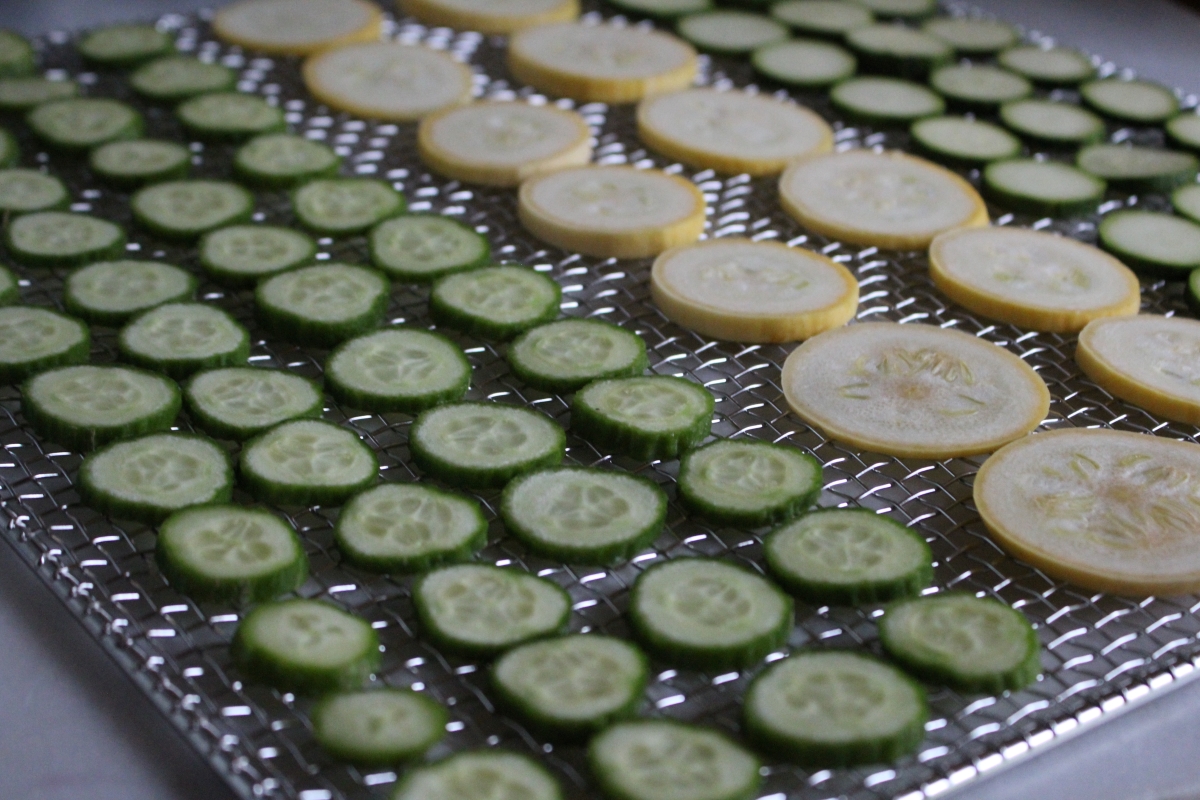
Cucumber Powder
Once you dehydrate cucumber slices, making cucumber powder is a few extra steps. You might have heard of strawberry powder or other fruit powders, but cucumbers are technically a fruit, so why not give it a try.
Take the dehydrated cucumber chips and put them in a blender or coffee grinder. Pulse until smooth; there should be no chunks or large pieces of the cucumber left.
It’s totally fine to use flavored cucumber chips to make cucumber powder!
After you make this, store it in an airtight container close to the size of powder you have. It shouldn’t have too much open space, or it will cause the powder to go rancid. Include an O2 absorber if you don’t plan to use them anytime soon.
My favorite way to use cucumber powder is to make different veggie dips or toss them into sauces for a different flavor!
Cucumber Mint Jam
Cucumber and mint seem like a strange mixture, but the unusual flavor combination tastes great. It’s not a jam that I need to have dozens of jars; all I need is one batch a year to enjoy throughout the season. I also give a few jars to friends and family as gifts.
First, you have to peel the cucumbers, then slice them in half and scoop out the seeds. Finally, dice the cucumbers and they’re ready to go into the pot.
Put all of the cucumbers, lemon juice, vinegar, and pectin into a pot, bringing it to a full boil. Add the sugar, and bring it to a boil again.
Remove it from heat and take off the foam. Now is the time to add the mint. It’s possible to can this jam by processing for 10 minutes in a boiling water bath.
It’s worth a try; you might find that you love cucumber mint jam.
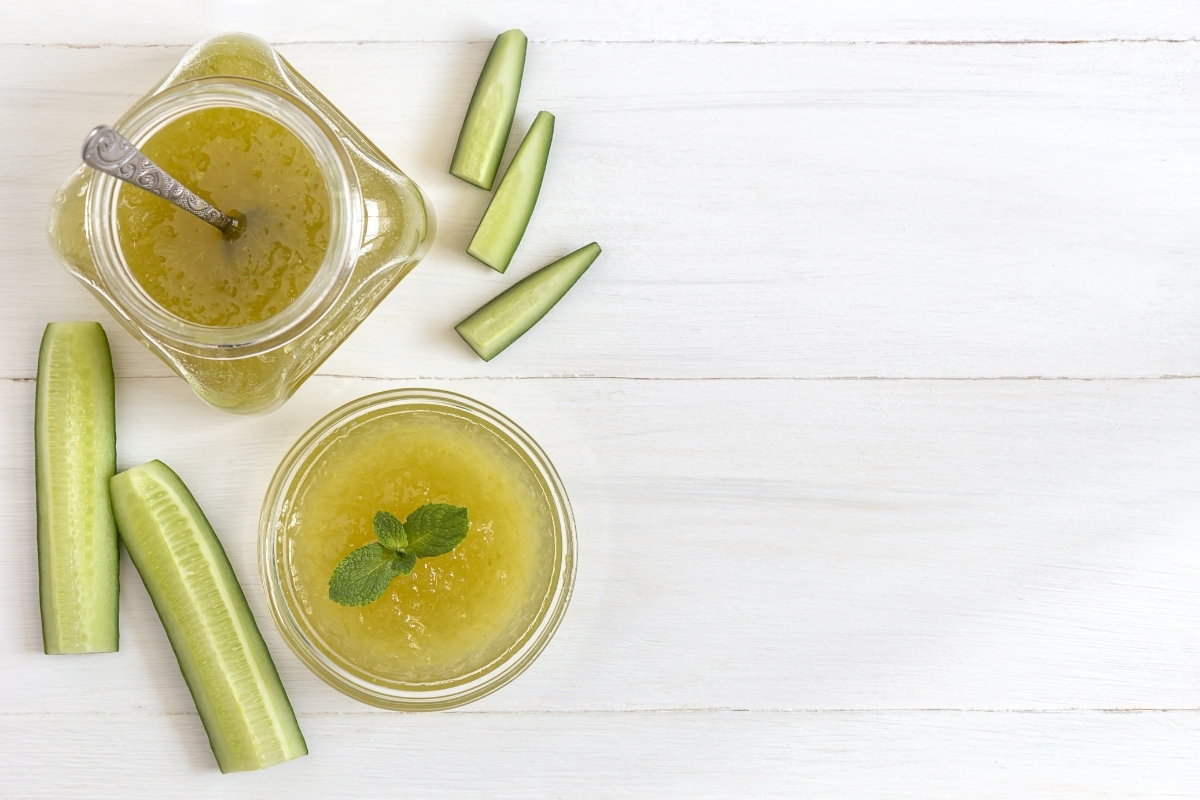
Canning Cucumber Jelly
If cucumber mint jam isn’t your thing, you might prefer canning cucumber jelly. If you’ve made jelly before, the process is similar. I tried making cucumber jelly that was just cucumber jelly and sugar; it wasn’t so good.
I like adding a tangy flavor to cucumber jelly. This isn’t the type of jelly that you use on your peanut butter and jelly sandwich. It’s better on crackers with some cheese.
To make cucumber jelly, you first need a juicer; you have to juice all of your cucumbers to develop the cups required. Then, bring the cucumber juice to a boil, mixing in the sugar, pectin, and other additives.
Using vanilla beans adds a nice flavor that helps to even out the jelly. If you want to make it more tangy or savory, consider using dill or jalapenos. Cucumber jalapeno jelly sounds so good!
Cucumber Salsa
I love a good salsa recipe; my family eats so much salsa. Last summer, I found this recipe to make cucumber salsa, and I had to give it a try because I had more cucumber than I knew what to do with them.
Cucumber salsa is a mixture of crunchy cucumbers, tomatoes, jalapenos, herbs, red onion, and seasonings. We eat it with chips, tacos, grilled chicken, fish, and more.
This isn’t a canning recipe, but you might be able to can it by adding vinegar to the recipe. That would change the flavor profile a bit.
Fermenting Cucumbers
One of the easiest ways to preserve cucumbers is fermenting, but too many people think fermenting is too complicated. In reality, fermenting is one of the easiest ways to preserve foods. You put all of the ingredients into a jar and let bacteria do its work.
These fermented cucumbers are made in salt brine rather than vinegar, but you can find different recipes that use vinegar brines. Using salt brine creates a tangy flavor. Best of all, when you feed your family fermented cucumbers, they receive delicious immune-boosting probiotics.
It’s best to use small, short cucumbers with thin skin. They’ll have the best, crispy texture. Since you aren’t canning, feel free to use large glass jars. I like ½ gallons when I ferment cucumbers, assuming I have enough cucumbers.
This recipe for fermented pickles uses fennel seeds, mustard seeds, coriander seeds, allspice, dill seeds, celery seeds, and peppercorns. However, the great thing about fermenting foods rather than canning them is that you can change the recipe however you want. Add a few peppers for heat or garlic for more flavor.
You have to try making fermented pickles this summer.
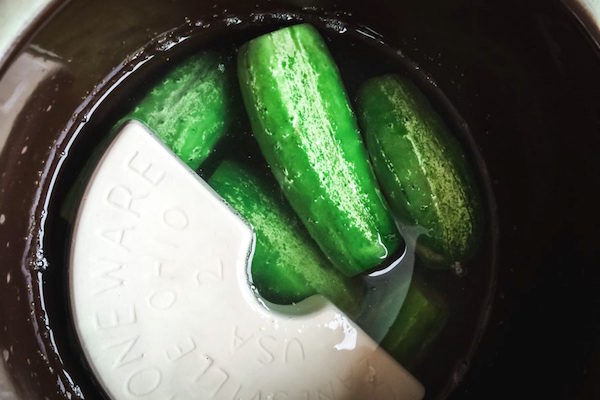
Peppered Cucumber Infused Vinegar
Don’t buy flavored vinegar at the store; they’re so easy to make at home without paying for these specialty vinegars. Pepper cucumber-infused vinegar is just one recipe that you can try. It’s safe to experiment and find your favorite recipe.
Infused bottles of vinegar are delicious on salads or use them to make dipping sauces.
This vinegar is infused with cucumbers, pepper, and garlic. The prep time only takes a few minutes, and the jars need to sit for several weeks to let the vinegar be infused with flavor. It requires a minimum of six weeks to get the proper taste.
Slice the cucumbers and stack them in a jar, along with peppercorns and garlic. Then, fill the rest of the jar with vinegar and add a thickly sliced onions layer. After it infuses, strain the cucumbers out, and you have a jar of infused vinegar.
Cucumber Sorbet
Homemade cucumber sorbet is so refreshing and simple. All you need is cucumbers, lemon juice, and sugar. At first glance, the amount of sugar in this recipe is frightening; sugar is required to make sorbet. If you don’t add enough sugar, you’ll end up with an icy sorbet. The right amount of sugar is necessary to get your sorbet to freeze.
To make sorbet, you need an ice cream maker or machine. The recipe is so easy. Peel and seed your cucumbers and cut them into easy-sized pieces. Put them in a food processor with sugar and lemon juice, processing until the ingredients are smooth.
Put everything in an airtight container and let it chill in the fridge until it’s cold. Then, transfer this mixture to your ice cream maker and follow the unit’s directions.
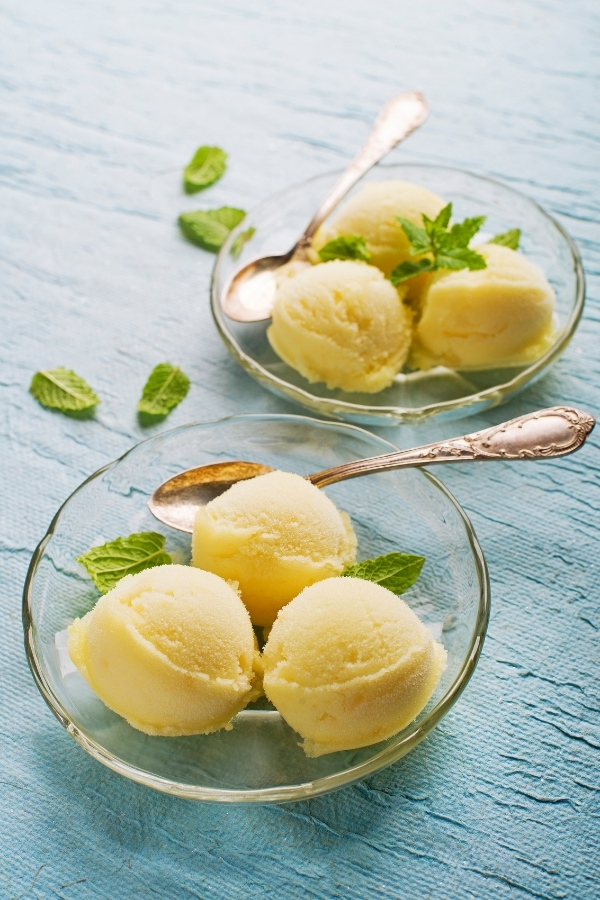
Cucumber Wine
Yes, you seriously can make cucumber wine, and it’s delicious. The recipe uses oranges, lemons, cucumbers, sugar, and a few other ingredients.
Everything needs to be peeled, sliced, and you should remove the pith to prevent bitterness. The pith makes a difference, so take the time to remove them.
This recipe isn’t for true beginners; several steps might be confusing for a newbie. Make sure you save it to give it a try when you feel more confident at making wine. It doesn’t have a strong cucumber flavor, as you might assume. It’s very smooth and fruity.
Cucumber Mint Kombucha
Everyone loves different flavored kombucha, and cucumber mint kombucha is a great flavor to try for your family. You need plain kombucha that’s ready for flavoring to make this recipe.
Put cucumbers, mint leaves, and cane sugar into a jar and pour in the plain kombucha, leaving two inches of headspace. Seal the bottle and let it ferment for 2-3 days. Once you enjoy the flavor, store it in the refrigerator until you’re ready to enjoy it.
Cucumber Infused Vodka
If you love martinis or other alcoholic drinks, you’ll love homemade cucumber-infused vodka. It’s so easy, and it adds delicious flavors to your cocktails.
Remove the skin from the cucumber and put it in a glass jar. Fill the jar up with vodka and let it sit in your fridge for one week. After the vodka has the flavor you want, strain out the cucumbers, and use it to make a martini.
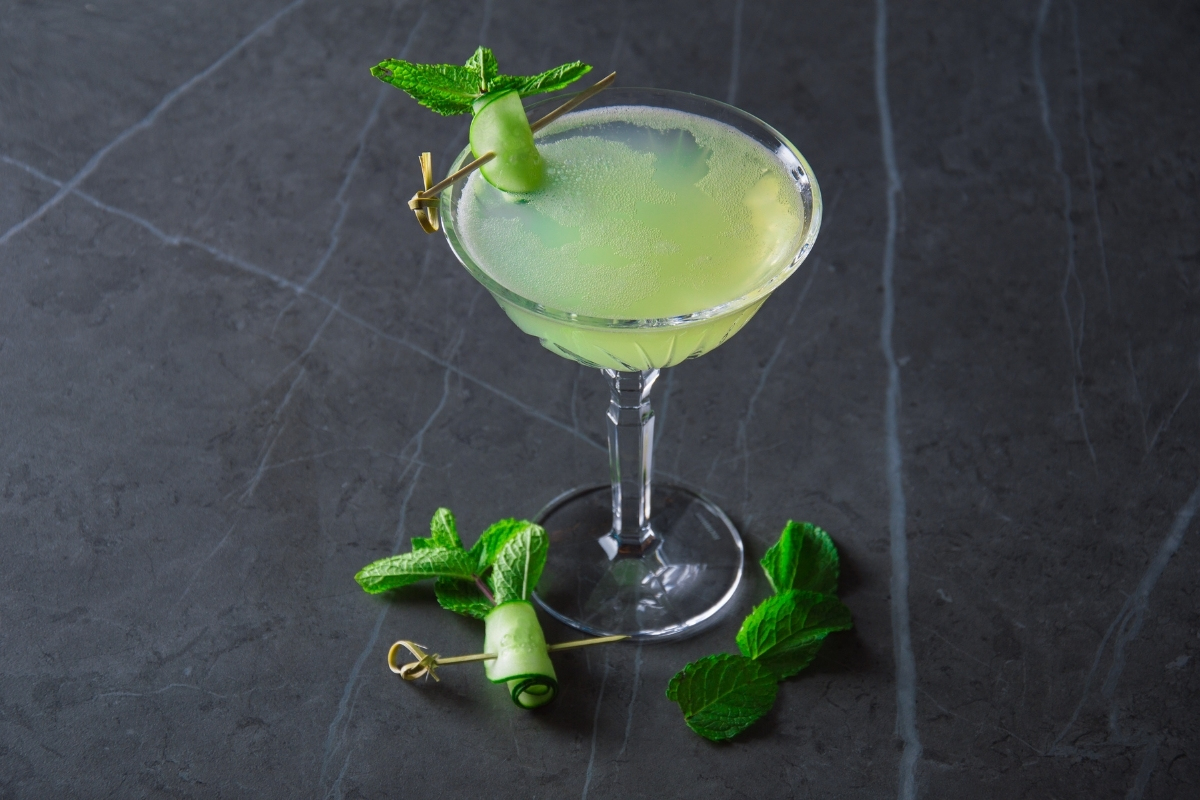
Cucumber Pickling Recipes
As promised, I saved the pickle recipes for the end. We put up at least 50 jars of pickles every year, including plenty of jars of baby gherkin pickles with cucumbers harvested at about an inch long.
These are some of my very favorite pickling recipes, so if you’re only going to make a few jars of pickles a year, this is a great place to start!
Sweet Refrigerator Pickles
Sometimes, I have cucumbers coming out of my ears but no energy or desire to can them at that moment. That’s when I switch to making some refrigerator pickles.
It’s best to start with the smallest cucumbers that you can find. Small cucumbers have smaller seeds and more meat to them, and the meat is what makes pickles crispy. Slice your cucumbers into ¼ inch slices and pack them into your jar. You don’t have to worry about headspace because you aren’t canning the pickles.
Put all of the spices into the jar. I like to use peppercorns, mustard seeds, dill seeds, and coriander seeds. Fresh dill gives these pickles a great flavor. You can get creative and add a variety of spices.
Make a vinegar brine with half water and half apple cider vinegar. Then, you cover the cucumbers with vinegar and water. Store the jars in the refrigerator, letting the flavors combine for several days before testing them.
Check out my full recipe for refrigerator dill pickles.
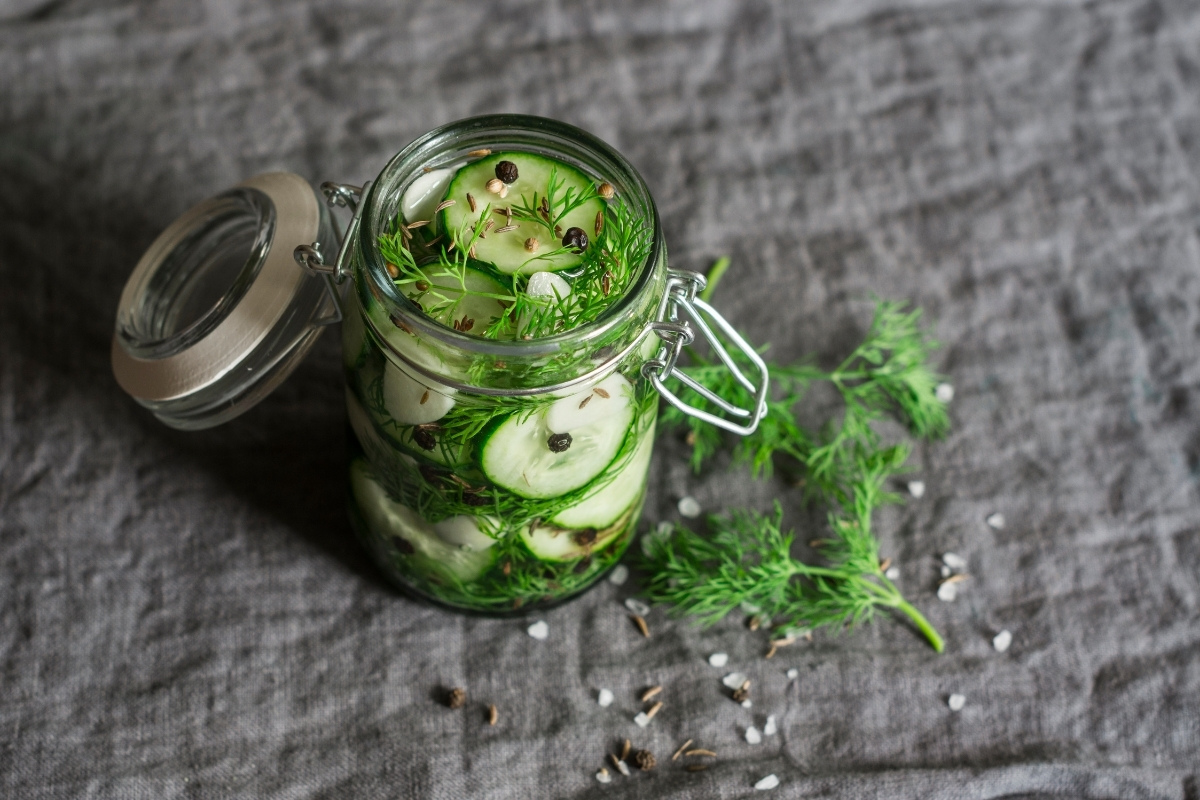
Canning Dill Pickles
Nothing compares to a homemade canned dill pickle on top of a burger in the middle of the winter. We love burgers, and eating my canned dill pickles is like a glimpse into the future. I get excited.
I found that larger cucumbers are better for dill pickle relish or bread and butter pickles. Don’t skip the step of pulling out moisture with salt; it’s needed to remove bitterness from the cucumbers and make sure the pickles are crispy.
Using pickle crisp is a great trick as well. It’s just calcium chloride, so you don’t need to worry about any strange chemicals making your pickles crispy.
Make a brine of water, vinegar, and salt, and let it come to a boil while you wash the cucumbers and cut off the ends. Put the seasonings into the jar, fill with cucumbers and a few garlic cloves. Cover it with the brine and process pints for 10 minutes.
You’ll love my simple recipe for dill pickle recipe for home canning.
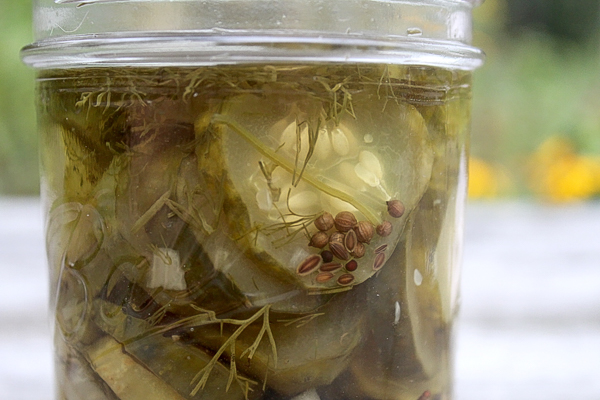
Canning Relish
Every home pantry needs a few jars of home-canned sweet dill pickle relish. We spread it over our burgers, hot dogs, and homemade chicken salad.
Relish is the perfect way to use up the huge cucumbers you accidentally miss when you harvest your plants in the summer. You know what I’m talking about; one day, you think you gathered all of the properly sizable cucumbers, but then two days later, you find one that is gigantic that you missed tucked under a random leaf.
My dill pickle relish recipe uses a lot less sugar than other canned relish recipes. I read some recipes that made me think these people wanted to make jam instead of relish. Relish should be savory with a bit of sweet, not the other way around.
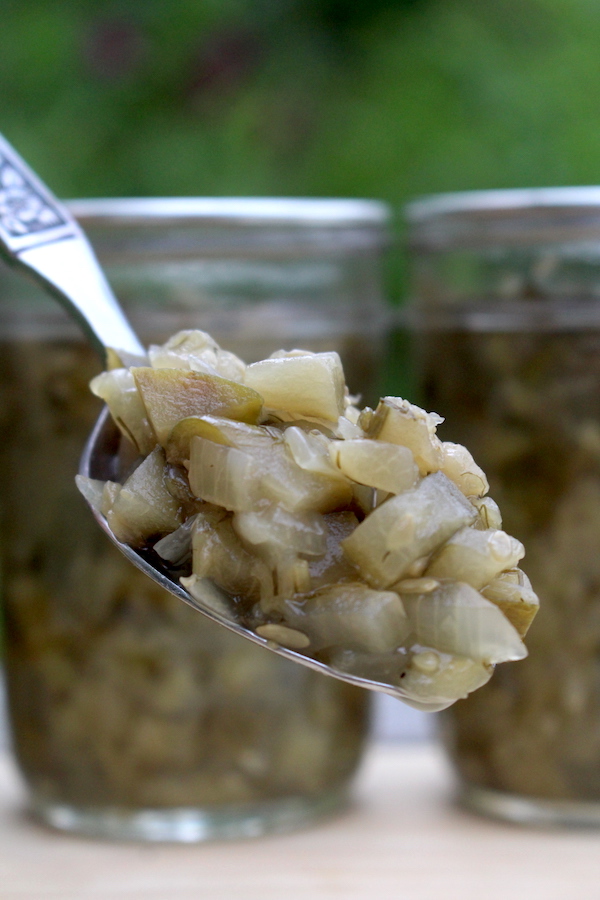
Canning Bread and Butter Pickles
When you’re ready for a break from the dill in your home canned pantry, try some bread and butter pickles. I never considered making these pickles before because I love dill pickles, but I ended up with many cucumbers that needed to be used up before they went bad. So, I gave this a try.
It turns out that I love bread and butter pickles more than I realized.
The fantastic thing about making bread and butter pickles is that they remove the bitterness from the oversized cucumbers that every gardener ends finds hidden under leaves at the end of the season.
The tiny cucumbers make the best pickles, but we always end up with cucumbers that get out of hand. We need to use those up, and here’s the perfect solution.
The recipe starts with pulling out moisture from the cucumbers with salt and rinsing them well. You make a sweet and sour canning brine out of vinegar and a heavy amount of sugar. I add in some mustard seeds, celery seeds, and turmeric. If you want a bit of zestiness, add some ginger or horseradish.
Take a look at how I make the best bread and butter pickles. Make sure you wait at least two weeks before trying them; they need time to absorb and combine all of the flavors. The jars of pickles stay good for at least 18 months or longer.
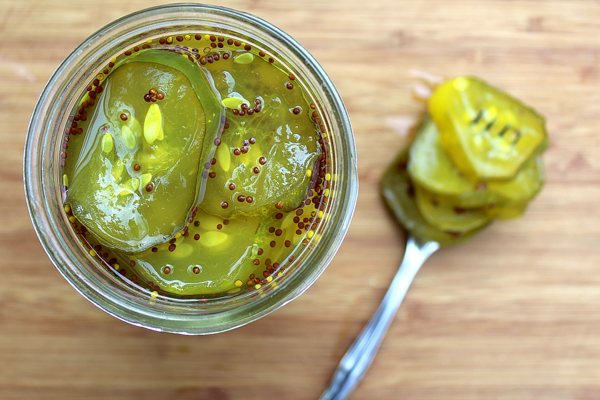
Spicy Garlic Dill Pickles
Recently, my husband asked me to make pickles with a bit of a kick. He likes some heat on his burgers, so I decided to try adding a bit of spice to dill pickles, which we eat a lot of in our house.
Spicy pickles aren’t something that you need to make in copious amounts; a few jars will last you all year long unless you’re a serious pickle addict. Make sure you use small, fresh pickles to get the best crunch possible. You can adjust the spice level of this recipe by using different spicy peppers.
My husband suggested I try using ghost peppers, but I think that might be too hot!
It’s possible to can spicy pickles if you love them that much. Can them just like you would my dill pickle recipe; the biggest difference is the addition of a few peppers.
Food Preservation Guides
Preserving more than just cucumbers this season?
- 20+ Ways to Preserve Lemons
- 30+ Ways to Preserve Apples
- 30+ Ways to Preserve Pumpkin
- 30+ Ways to Preserve Eggs
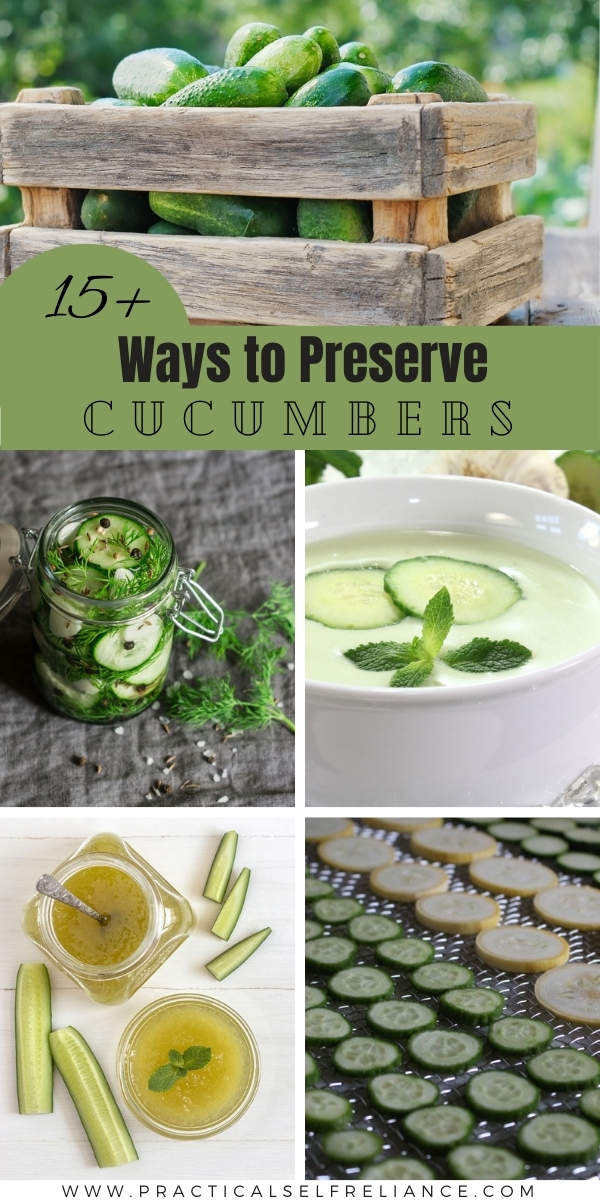

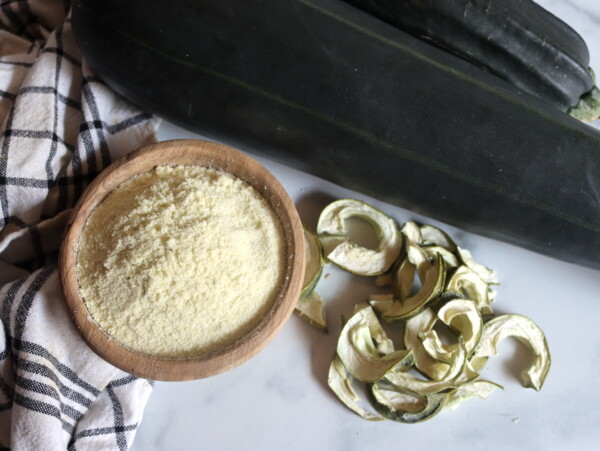

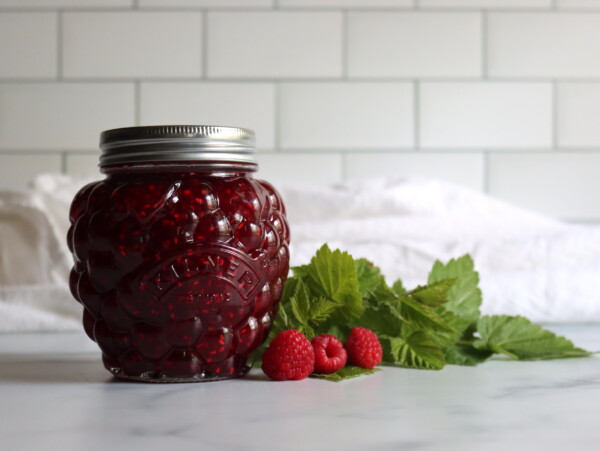










Hi Ashley… just a heads up. Several paragraphs down, there is a confusing statement, as follows:
FREEZING CUCUMBERS
Believe it or not, freezing cucumbers is possible. Most people assume that it’s not, but as long as you understand the texture will be different ranch-flavored the cucumbers.
I think it was some weird cut-and-paste mistake or something, the “ranch flavored” part. Anyway, good post, and thanks as always!
Oops! Thank you so much for catching that, I always appreciate corrections! Going into fix now.
Save your brine from those bread and butter pickles. Add some beets and refrigerate for a week.
My fave fresh pickle is fresh cukes and onions sliced into lightly sweetened white vinegar seasoned with fresh thyme and cilantro. Refrigerate 24 hous and serve.
Bread and butter beets sounds amazing!
Hi! Good content here. I personally store cucumbers in a container with ice water in the fridge and change the water every few days. That keeps them extremely crispy. The second trick then for pickles is to add a bay leaf or wild grape leaf to each jar for crispy ness. That’s even more natural than adding calcium chloride and may be cheaper, too. I’ll have to try some fermented cucumbers this year. Happy gardening!
GREAT ideas. It never occurred to me to freeze cucumbers. I will now. I love infused water with our fresh cucumbers. Now I will freeze the cukes and we can have infused water with our cuke’s all winter as well. You should REALLY write a book. Or many books.
Wonderful, so glad it’s helpful to you!
Your newsletters are always so timely and informative! Love this post, it has some really fresh and unique ideas that I didn’t think about – like freezing and dehydrating the cucumbers. We have several gallon size bags full of cucumbers in the fridge and even the thought of them going to waste gives me incredible anxiety. Just canned some sweet relish this week and that made a dent, but of course the harvest continues haha! Thanks for the ideas.
You’re quite welcome!
I like to use the cucumber vodka in Bloody Ceasar/Mary!
Holy smokes! This was a lot of content. Your bread and butter pickles look awesome. Thanks!
What a wonderful list of ideas for cucumbers! I’m definitely going to be trying the spicy garlic pickles and dehydrating some. That’s where I will start anyway. 🙂 So many tasty treats. Also, I’ve always been a huge fan of mint and cucumber. such a delightful combination! Thanks so much for including my infused vinegar!
You’re so welcome. So glad you enjoyed the post.